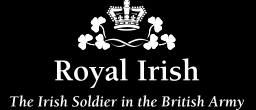A Memory of The Somme

|
| 'A Trench, Thiepval: German Wire, 1917' by Major Sir William Orpen |
A War Poem by Major Sir William Orpen*
A memory of the Somme
A Fair spring morning = not a living soul is near
Far Far away I hear the faint grumble of the guns
The Battle has passed long since
all is Peace.
sometimes there is the faint Humm of aeroplanes
as they pass overhead, Amber specks-High up in the
Blue
Occasionally there is the movement of a rat in the old
Battered trench on which I sit = still in the confusion
in which it was left.
The sun is Baking Hot.
strange odours come from the door of a dug-out with
its endless steps running down into blackness
The Land is White=dazzling
The distance is all shimmering in Heat.
A few little spring flowers have forced their way
Through the chalk. =
He lies a few yards in front of the trench
we are quite alone
He makes me feel awed, and small, and ashamed.
He has been there a long long time
Hundreds of eyes have seen him
Hundreds of Bodies have felt faint and sick
because of him
Then this place was Hell,
But now all is Peace-the sun has made Him Holy
and Pure—
He and His garments are bleached pale and clean
A daffodil is by his head, and His, golden curly Hair
is moving in the slight breeze
He, the man who died in “No Mans Land,” doing some
great act of bravery for his comrades and country
Here He lies = Holy and Pure, His face upward
Turned
No earth between him and His Maker.
I have no right to be so near.
(The above poem is written as it appears in William Orpen's original hand-written draft in Spring 1917. Please click on Mud to read another poem by William Orpen.)
*
*Major Sir William Newenham Montague Orpen, (b. 27 November 1878 – d. 29 September 1931) was born at Stillorgan, County Dublin. During the First World War, he was the most prolific of the official war artists on the Western Front. He produced drawings and paintings of ordinary soldiers, the dead, and German prisoners of war, as well as portraits of generals and politicians. He donated 138 of his works to the British government and they are now held or displayed in the Imperial War Museum, London.





